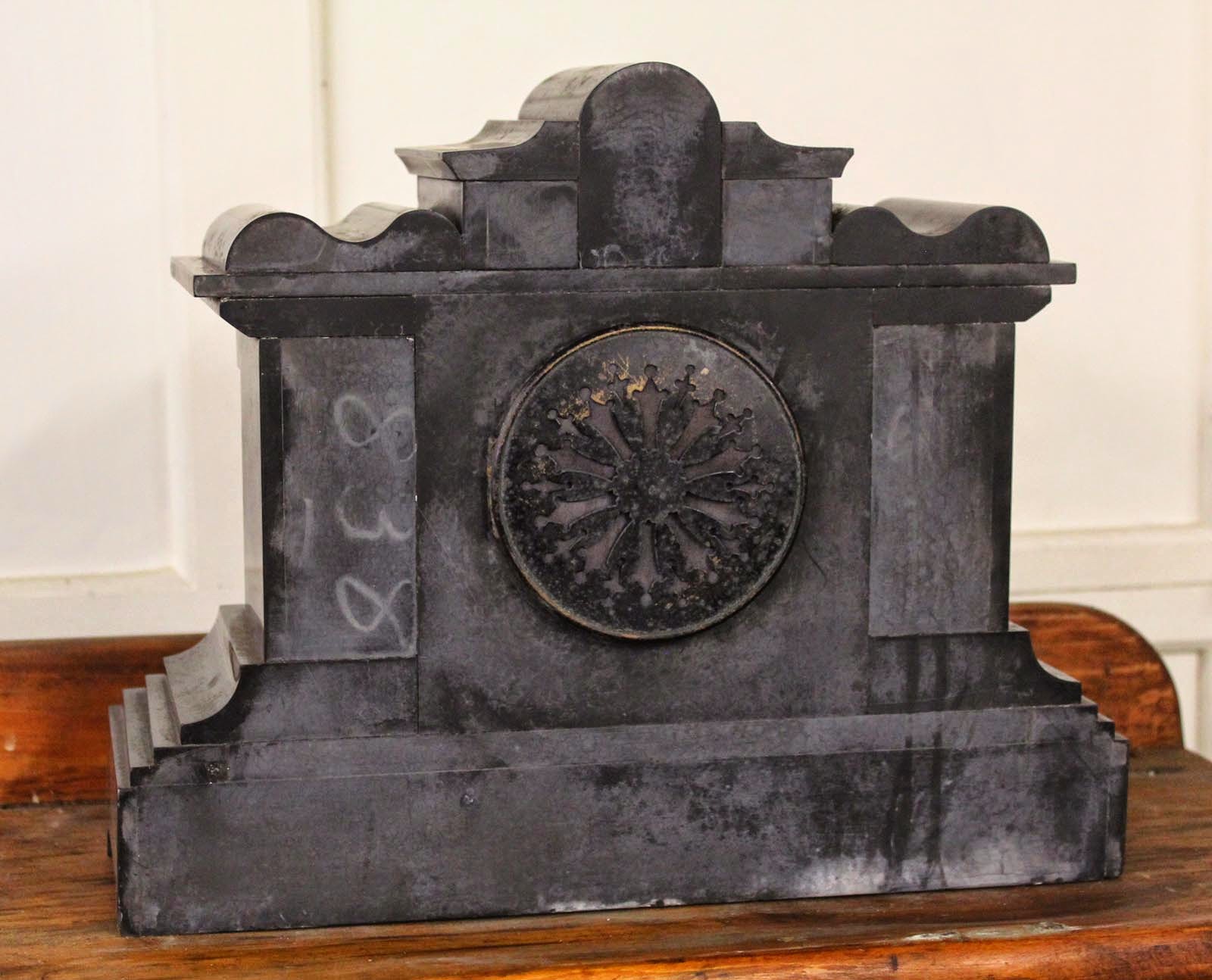First up today is a lesser-known Connecticut clock company, which began its history with Elisha Niles Welch (1809-1887), who peddled wooden-movement shelf clocks during his youth with his father. Welch eventually started the E. N. Welch Clock Company in the Forestville section of Bristol. The company continued operations until 1902, when it was bought out and renamed the Sessions Clock Company.
Sessions hit hard times during the mid-1950s and was itself bought out in 1958 by Consolidated Electronics Industries Corporation of N.Y., which kept the Sessions company going until 1968.
This is a classic ogee shelf clock, which were popular from the 1830s through the 1880s. Some continued to be made in the 1890s, but by then the "gingerbread" style of case had come into fashion. "Ogee" is an architectural term, which refers to the curve of the case border.
The lower portion of the glass front, as is expected with an ogee clock, has a painting done in reverse on the inside, so that it can be viewed on the outside. This is called reverse-glass painting, and it was often done by young women. The Connecticut clock industry was an early employer of women, who were hired to paint the dials and glass of the clocks. When Connecticut's watch industry took off, women were hired for their "nimble" and "delicate" fingers.
The scene on the glass is a view of the Alameda de Paula in Havana, Cuba. The print was published on the front page of the London Illustrated News in 1853. I don't know if it was reprinted in a U.S. magazine, or if a copy of the Illustrated News found its way to Connecticut.
 |
| The remains of the original label inside the case. |
 |
| The maker's name stamped on the movement, visible through an opening in the dial. |
"S" Clock Company
There are two "gingerbread" clocks in my grandfather's collection that are marked only with an S inside a circle on the dial. Is it Sessions? Is it another company?
 |
| The "S" logo is obscured by the brass ring just above the 6. |
Unknown French Maker
The only identification mark that I have found on this clock is a "medaille d'argent" stamp on the movement. It could be a Vincenti & Cie, or it could be a completely different company.
The case is heavy stone, carved with decorative patterns, some inlay, and what I presume to be marble columns.
 |
| The glass has remnants of stickers, but is otherwise in good shape. The case has sticker remnants as well and could use a little sprucing up. |







No comments:
Post a Comment